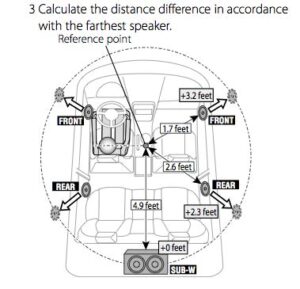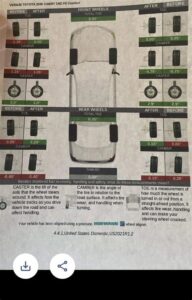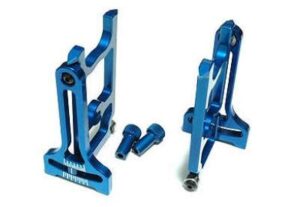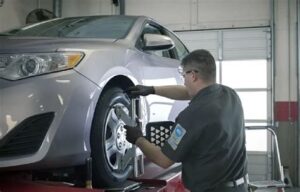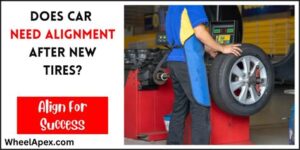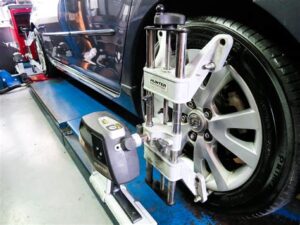Title: After Alignment, Does Your Car Still Pull to the Right?
A seamless driving experience hinges on precise wheel alignment, but what happens when your car exhibits a persistent rightward pull even after the alignment has been adjusted? It’s frustrating and can lead to safety concerns if left unaddressed. This article delves into the causes of a car pulling right after an alignment and highlights key signs of misalignment that you should be aware of. We’ll provide troubleshooting steps to help you determine the underlying issues and emphasize the importance of proper wheel alignment. Additionally, we’ll explore professional solutions available for those persistent pulling problems. Whether you’re a seasoned driver or a new car owner, understanding these aspects will empower you to ensure your vehicle’s optimal performance. Let’s drive into the details!
Causes Of Car Pulling Right After Alignment
Experiencing a car that pulls to the right after alignment can be frustrating. Several factors may contribute to this issue, and understanding them can help owners take appropriate action. Here are some common causes:
Identifying the root cause of the pulling issue after alignment can aid in preventing further complications and restoring vehicle performance. It’s always advisable to consult with a professional if uncertain about the underlying reasons.
Signs That Indicate Misalignment After Alignment
Even after a professional alignment, there are several signs that may indicate persistent misalignment issues with your vehicle. Recognizing these signs early can help prevent further tire wear and ensure your safety on the road. Here are some common indicators:
- Uneven Tire Wear: If you notice that your tires are wearing down unevenly, with one side showing more wear than the other, it could be a sign that your wheels are still misaligned after alignment.
- Steering Wheel Off-Center: When driving straight, if your steering wheel is not centered or appears to be tilted, it suggests that your vehicle may not be properly aligned.
- Pulling to One Side: If your car still pulls to the right or left after alignment adjustments, it indicates that misalignment issues have not been fully resolved.
- Vibration in the Steering Wheel: Excessive vibration in the steering wheel, especially at high speeds, can be a sign of misalignment after alignment. It can also suggest issues with wheel balance or suspension.
- Difficulty Steering: If you find it more challenging to steer your car or it feels unusually loose, this could indicate alignment problems.
Paying attention to these signs can help you address alignment issues promptly, ensuring a safer driving experience and prolonging the life of your tires.
Troubleshooting Steps For Car Pulls Right After Alignment
If your car continues to pull right after alignment, it can be frustrating and potentially dangerous. Here are some troubleshooting steps you can take to identify the issue:
- Examine Tire Pressure: Check the tire pressure of all four tires. Uneven pressure can lead to pulling. Ensure that your tires are inflated to the recommended levels specified in the vehicle’s owner’s manual.
- Inspect Tire Condition: Look for any signs of uneven wear on the tires. Worn or damaged tires can cause pulling. If you notice unusual tread wear, consider rotating or replacing the tires.
- Verify Wheel Alignment: Ensure that you have received a proper wheel alignment. Sometimes, the alignment might be off even after a professional service. Get a second opinion from a reputable alignment shop.
- Check Suspension Components: Examine suspension parts such as control arms, bushings, and ball joints for wear or damage. Worn suspension components can affect alignment and lead to pulling.
- Review Brake System: Ensure that the brakes are functioning properly. A stuck caliper or uneven brake wear can cause the vehicle to pull. Inspect the brake system for any issues.
- Test Drive on Different Roads: Sometimes the road surface can create a false perception of pulling. Drive your car on a flat and even surface to see if the pulling persists.
- Consider Road Crown: Road design may contribute to pulling. Most roads have a crown that helps with drainage. If the car pulls more prominently on these roads, it may not indicate a problem.
By following these troubleshooting steps, you can potentially identify the reason why your car still pulls to the right even after alignment. If issues persist, seeking professional help may be necessary to ensure your vehicle’s safety and performance.
The Importance Of Proper Wheel Alignment After Alignment
Maintaining a proper wheel alignment is crucial for the overall performance and safety of your vehicle. When you ensure that your wheels are aligned correctly after alignment, you improve not only the handling of your car but also enhance tire longevity, fuel efficiency, and ride comfort.
One of the primary benefits of proper wheel alignment after alignment is improved handling. When your wheels are correctly aligned, they will work together harmoniously, allowing your car to respond accurately to steering inputs. This responsiveness can significantly enhance your driving experience and make handling more predictable, particularly in emergency situations.
Tire wear is another critical factor related to wheel alignment. Misalignment can cause uneven tire wear, leading to the need for premature replacements. By ensuring proper wheel alignment after alignment, you not only save money on tire replacements but also contribute to safer driving conditions.
Moreover, proper alignment can lead to improved fuel efficiency. When your wheels are aligned, they create less rolling resistance, which means your engine doesn’t have to work as hard to move the vehicle. This efficiency can result in better mileage and lower gas expenses over time.
A well-aligned vehicle provides a more comfortable ride. Misalignment can lead to a bumpy or uneven driving experience, as the vehicle struggles to stay straight. By addressing wheel alignment after alignment, you ensure that your ride is smooth and enjoyable.
The importance of proper wheel alignment after alignment cannot be overstated. It enhances safety, improves vehicle handling, maximizes tire life, increases fuel efficiency, and offers a more comfortable driving experience. Don’t overlook this vital aspect of vehicle maintenance to keep your car running at its best.
Professional Solutions For Fixing Pulling Issues After Alignment
If you’ve experienced pulling after your car’s alignment, it is crucial to address the issue promptly to ensure both safety and vehicle performance. Here are some professional solutions that can help rectify pulling issues after alignment:
| Solution | Description |
|---|---|
| Tire Inspection | Check for uneven tire wear or damage that may be causing the vehicle to pull. Replace any defective tires. |
| Re-check Alignment | Sometimes misalignment can occur after alignment. Get a second opinion from a certified mechanic to confirm the adjustment. |
| Suspension Check | Inspect the suspension components for wear or damage, which could cause alignment settings to be ineffective. |
| Brake System Assessment | Examine the braking system for any issues. Sticking calipers or uneven brake wear can contribute to pulling. |
| Wheel Balance Evaluation | Ensure the wheels are properly balanced. Imbalance can lead to driving issues, including pulling to one side. |
In some cases, seeking a professional repair shop or a qualified mechanic is the best course of action. Addressing these issues after alignment will not only improve your driving experience but also prolong the life of your vehicle’s components.
Frequently Asked Questions
What does it mean if my car still pulls to the right after an alignment?
If your car continues to pull to the right after an alignment, it could indicate underlying issues such as uneven tire pressure, uneven tire wear, or problems with the suspension or steering components.
Could tire pressure affect the alignment results?
Yes, incorrect tire pressure can significantly affect how your car drives. If one tire has lower pressure than the others, it could cause the car to pull to one side.
What are the signs of uneven tire wear?
Signs of uneven tire wear include bald patches on one side of the tire, cupping, or different tread depths among tires which can all contribute to pulling.
Are there issues outside of alignment that could cause pulling?
Yes, issues such as damaged suspension components, worn out shock absorbers, or even frame damage from an accident can cause the car to pull despite proper alignment.
How often should I check my car’s alignment?
It’s advisable to check your car’s alignment every 6,000 miles or whenever you notice signs of pulling, uneven tire wear, or after hitting a significant pothole.
Can I fix pulling issues myself?
While you can check tire pressure and inspect for visible tire wear, it is generally recommended to have a professional inspect the alignment and suspension components for safety and accuracy.
What should I do if the pulling persists even after addressing these issues?
If the pulling persists after checking tire pressure, tire condition, and alignment, it’s best to consult with a qualified mechanic to diagnose and resolve any potentially serious underlying issues.
